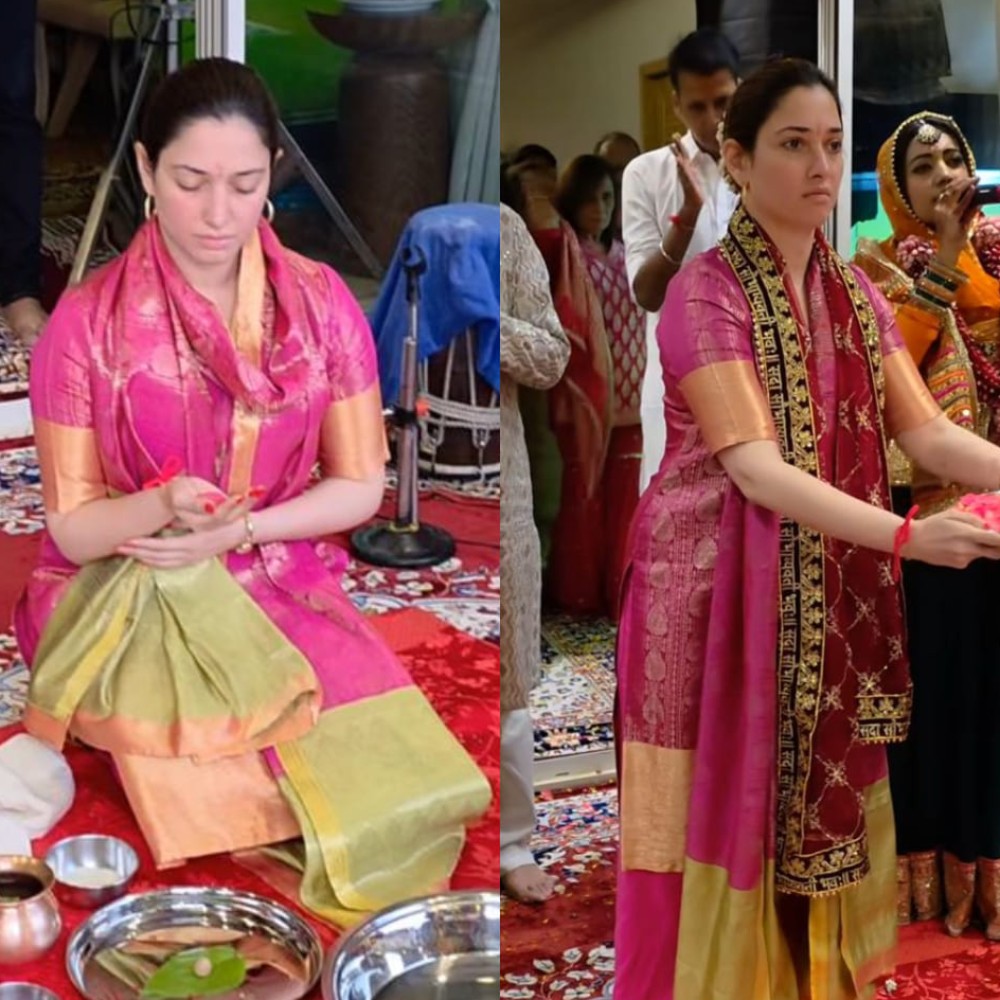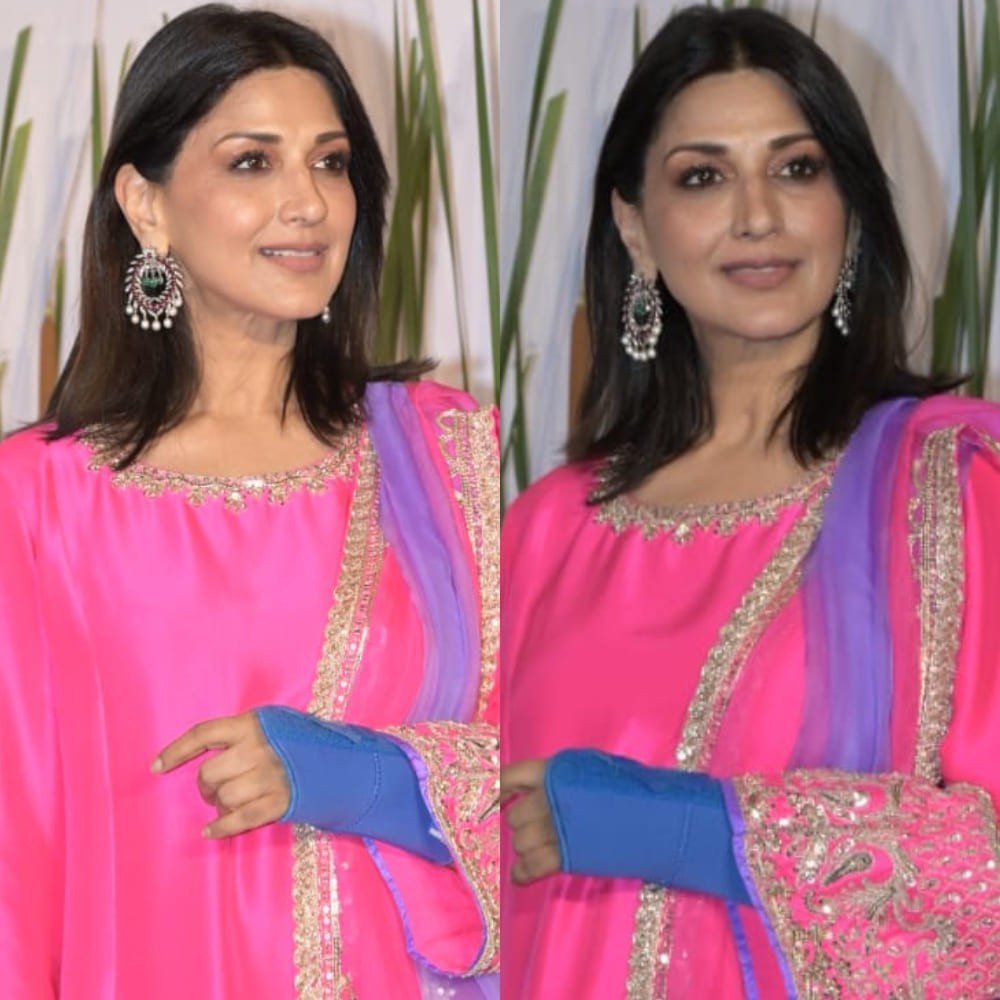Benefits of Matta Rice, a Superfood for a Healthy Lifestyle
Transform your thoughts on rice as you learn the benefits of Matta rice, packed with nutrition and fiber.
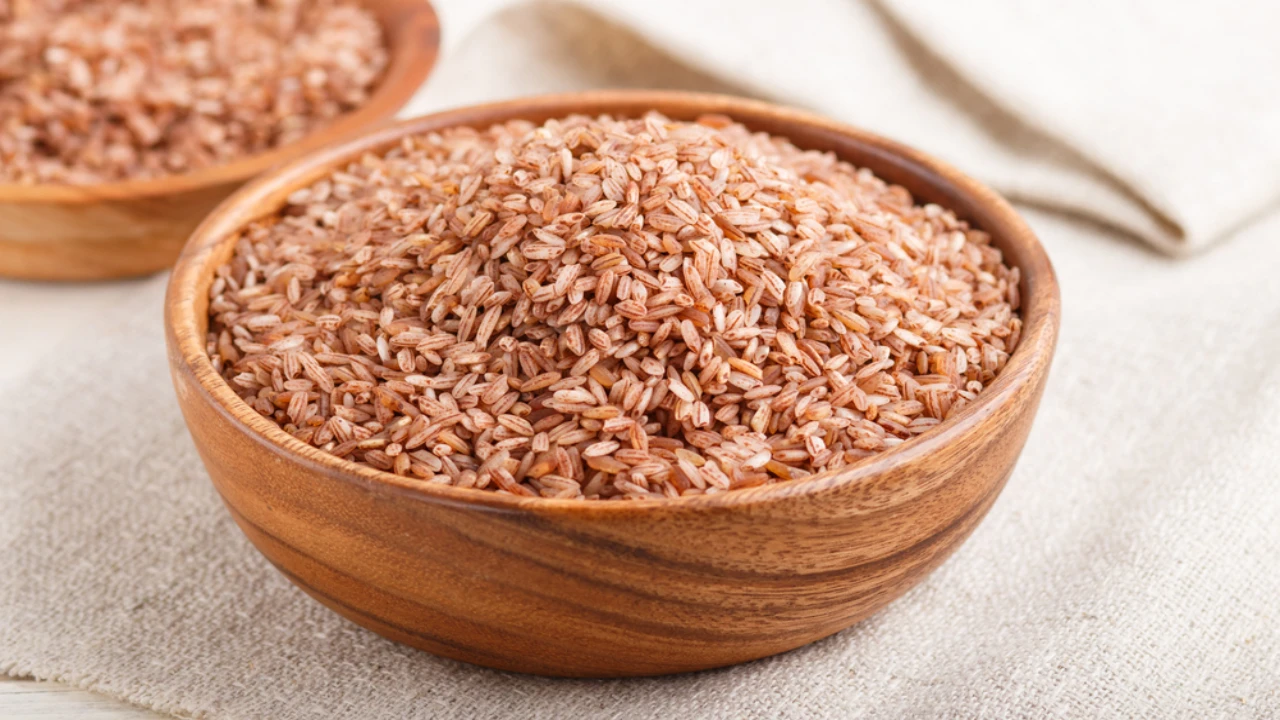
Rice over the years has generated a reputation of being unhealthy and fattening. According to RDN Urvi Gohil, Director & Founder of Enrich Lifestyle with Urvi, “Matta rice is the most nutrient dense & it is non-negotiable. The high fiber intake surely confirms that it is a low to medium Glycemic index food. The amazing nutrients and antioxidants help in improving organ health & with all these benefits they are so easy to be incorporated in the diet.” This has forced many into seeking exotic substitutes for rice; some of which are either extremely costly or hard to source on a regular basis. With Matta rice, however, you no longer have to ditch rice to live a healthier lifestyle. The benefits of Matta rice are ample. The nutrient-pack grain is not only rich in fibers but has proven evidence in reducing the risk of type 2 diabetes and blood pressure.
RDN Urvi Gohi further mentions, “There are some exotic substitutes to rice which are quinoa, millets, couscous and farro grain (which has gluten).”
Matta rice, also known as Red rice, Pallakadan rice, or Rosematta rice is grown in the Pallakad region of Kerala state, India. Read on to learn more about Matta rice benefits.
What is Matta Rice?
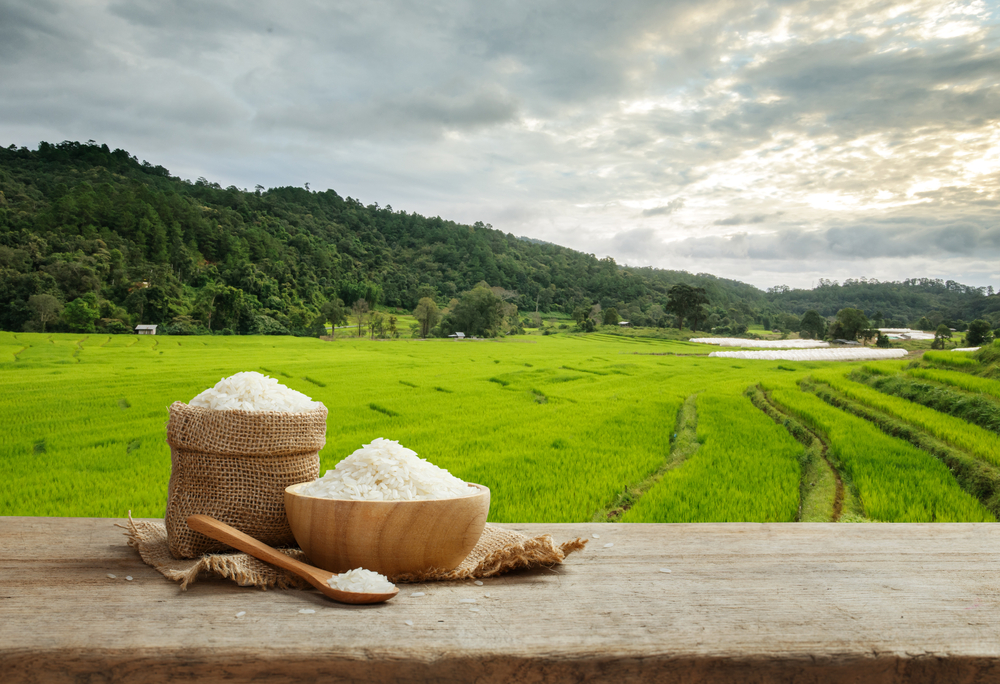
Matta rice has a unique taste and texture; almost resembling the nuttiness of dry fruits. This is a non-basmati rice with distinctive health benefits and a chewy texture. The red husk present in the outer layer of the rice gives it a brown look. The color of the husk is due to the presence of anthocyanin, a chemical rich in antioxidant properties (1).
As per our contributor Mary Sabat, rice production can be unsustainable, depending on various factors such as farming practices, water usage, and land management. She explains further, “Some rice cultivation methods can lead to soil degradation, excessive water consumption, and environmental issues. Sustainable rice farming practices, such as organic farming and water-efficient techniques, are being promoted to mitigate these concerns.”
Because of its sustainable farming and organic approach; it serves the complete benefit of being a rich source of fiber, antioxidants, vitamins, and minerals such as iron and magnesium.
Now that people are becoming more and more aware of the benefits of Rosematta rice, it is gaining traction outside Pallakad and Kerala as well. Generally, the people of Kerala use this rice in native cuisine and in dishes like idli, dosa, appam, and biryani too; they are equally popular and effective at being consumed simply as rice.
This gluten-free rice is free of pesticides and does almost zero harm to the human body. The farming of matta rice leaves the soil fertile, making sure the end product we are getting is chemical-free.
Nutrient Composition of Matta Rice
Matta Rice is a nutritious grain that offers a wide range of health benefits. Here's a breakdown of the nutrient composition of Matta rice per 100 grams (2):
- Calories: 356 kCal
- Carbohydrates: 82.2 g
- Protein: 8.89 g
- Fat: 3.33 g
- Fiber: 11.1 g
- Iron: 1.11mg
- Magnesium: 82 mg
- Zinc: 1.4 mg
- Potassium: 156 mg
- Phosphorus: 82 mg
- Thiamin (Vitamin B1): 0.1 mg
- Niacin (Vitamin B3): 1.6 mg
Matta rice is also a rich source of antioxidants, particularly anthocyanins, which give the rice its unique reddish-brown color. The antioxidants in the husk help protect against oxidative stress and contribute to preventing a lot of common chronic diseases like cancer, diabetes, and more, which we will read about further in detail (1).
Additionally, the high fiber content in Matta rice can promote digestive health, regulate blood sugar levels, and lower cholesterol levels with its rich nutritional profile and delicious taste (1).
Amazing Health Benefits of Matta Rice
Let's go through the red rice benefits here.
1. Rich in Nutrients
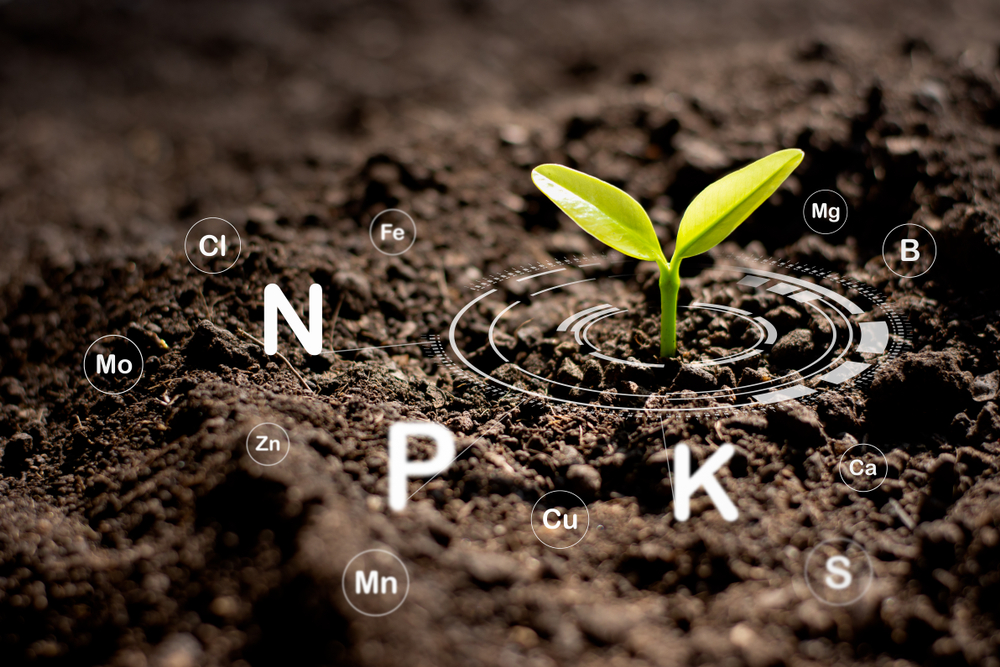
Apart from being tasty and nutty, the presence of the outer layer of the rice, which we call the pericarp or more commonly "husk," makes it a healthy option. This is not present in white rice. When white rice is polished to make it look shinier and more appealing, it loses all its nutritional value.
The red pericarp is rich in Vitamin B6, which helps in the production of the good hormone, serotonin, which is responsible for sleep regulation, mood swings, etc. One cup of Matta rice contains 0.2 mg of B6. Other than that, it is rich in calcium (100mg per 45 gm of red rice). Calcium is one of those essential nutrients that is required at every stage of life, and most women are deprived of it in their older years. It helps keep away diseases like osteoporosis in children and painful bones in elderly people (3).
Apart from calcium, red rice is also a high source of vitamin A, vitamin B, potassium, and magnesium.
2. High in Antioxidants
Red Matta rice is high in antioxidants due to the presence of a group of compounds called anthocyanins, which are responsible for the reddish-brown color of the rice. Anthocyanins are a type of flavonoid, a plant pigment that has powerful antioxidant properties. This reduces the risk of chronic diseases, improves immune functions, and delays aging (4).
To maintain a healthier lifestyle and prevent our body from oxidative stress, antioxidants play a significant role. Oxidative stress may lead to an imbalance of free radicals, leading to some major changes in DNA or cells. which may further lead to chronic diseases such as diabetes, high blood pressure, and cancer (3).
3. Promotes Digestive Health
Matta rice is high in fiber, which is the primary reason it is helpful for digestion. It is loaded with insoluble fiber, which adds support while passing stool. It regulates bowel movements, which prevents constipation. The fiber acts as a prebiotic for the gut bacteria and supports the digestion process. A healthy gut means staying away from gut-related diseases like irritable bowel syndrome (IBS), inflammatory bowel disease (IBD), or even colon cancer (5).
4. Lowers Cholesterol Level
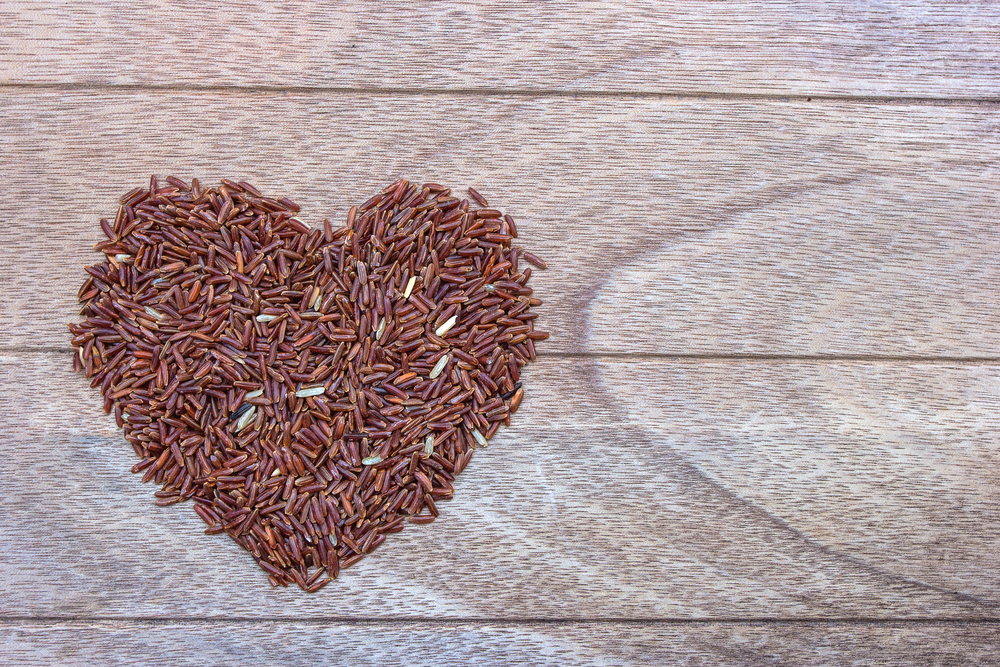
The lower the cholesterol levels, the lower the chances of having heart-related diseases. We have seen that Matta rice has soluble fiber content present, which binds to bile acids in the gut and prevents the absorption of fiber. Now, in order to replace the acid that was lost while binding with the fiber, the liver produces more bile juice, which uses up the cholesterol in the liver, lowering the total cholesterol level in the body (6).
Overall, the high fiber and antioxidant content of Matta rice make it a heart-healthy food choice (6).
5. Supports Weight Management
All we want to have is a tasty and healthy meal that could fill us to just the right amount. However, they usually never run parallel; as what we want is not what we should have. So, is red rice good for weight loss?
Yes, Matta rice gives you the perfect amount of fiber, which smooths your digestive system. That’s not it, it will also make you fuller when you eat less than usual. This means that when you eat less and eat healthy, there are very few chances of gaining unwanted weight. Just like you wanted! (2).
6. Gluten-Free
Matta rice is gluten-free. People with celiac disease and gluten intolerance can opt for red rice, as it is by nature gluten-free, unlike wheat, rye, or barley (7).
7. Decrease the Risk of Diabetes Mellitus

There are studies that have shown that consumption of Matta rice has a direct relationship with reducing the risk of type 2 diabetes. The high fiber content is easily digestible because of the low glycemic index of Matta rice. This helps digest the rice slowly, which results in a gradual rise in blood sugar levels (8).
8. Manages Blood Pressure
Highly rich in potassium, Matta rice is one of the superfoods that could help maintain regular blood pressure in your body. As per science, foods high in potassium help the body retain water and reduce the amount of sodium, leading to a decrease in blood pressure. Further, being high in fiber and antioxidants also contributes to maintaining idle blood pressure levels (9).
How to Consume Matta Rice in Your Diet
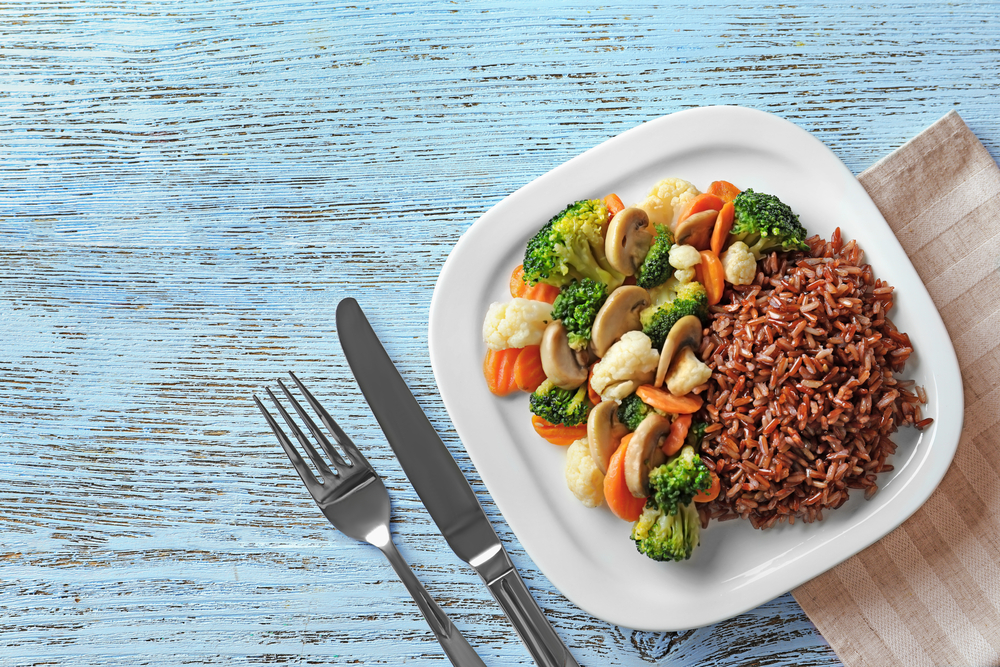
Matta rice vs White rice; how do you substitute your white rice with red rice? Well, this type of rice can be included in any form, be it sweet or savory just like your white rice.
The preparation of Matta rice is slightly different from that of white rice. Matta rice needs to be soaked for at least an hour before it is to be cooked. It takes a little longer to be cooked, whether in an open vessel or pressure cooker, because of its high fiber content. One cup of Matta rice needs 2.5 cups of water for cooking.
The longer it is soaked, the faster it gets cooked on the flame. Below are the common ways to use Matta rice in your diet.
- As a Side Dish: You can have Matta rice along with any curry stew or meat.
- In a Salad: Cooked Matta rice and some protein can be included in your salads. Usually, it goes well with an herb dressing.
- Matta Rice Pudding: Soak Matta rice for an hour and cook the rice in milk along with some brown sugar, cinnamon powder, and cardamom, works best as a dessert.
- As a Breakfast: Usually white rice flour is used to make famous breakfasts like puttu, appam, idli, and dosa. White rice paste is also used in famous street-style Asian cuisines, which can be replaced by red rice.
- Fried Rice: Heat oil in a wok and add veggies of your choice. Dump in some spices and add cooked rice to it. Enjoy the delicious flavors of rice without any guilt of gaining weight!
Conclusion
Matta rice, or red rice, is a nutrition-packed delicacy that is enjoyed mainly in South Asia. The benefits of Matta rice include maintaining blood sugar levels, improving heart-related disease conditions, and regulating blood pressure levels. Apart from that, it is highly rich in fiber, and other complex compounds, which are rarely found in white rice.
White rice, on the other hand, is high in carbohydrates and low in other nutrients. While Matta rice has consistently shown a positive impact on health along with being a tastier alternative to white rice, however, it is worth noticing that anything in excess amounts could do more harm than good. If you notice any adverse effects, it is best to seek professional help as soon as possible.
Contributor: Mary Sabat, RDN, LD, Ace Certified Trainer - Body Designs Ltd.
Source:
1. Nutritional value of red rice to provide solution for malnutrition in India
2. HISTORICAL RECORD]: RED RICE
https://fdc.nal.usda.gov/fdc-app.html#/food-details/548842/nutrients
3. Nutritional and functional properties of coloured rice varieties of South India: A review
4. The Golden Rice Bran: Red Rice and its Health Benefits
https://www.ijsr.net/archive/v10i3/SR21312201321.pdf
5. Dietary Fibre Modulates the Gut Microbiota
https://www.ncbi.nlm.nih.gov/pmc/articles/PMC8153313/
6. Mechanisms underlying the cholesterol-lowering properties of soluble dietary fibre polysaccharides
https://pubmed.ncbi.nlm.nih.gov/21776465/
7. Spectrum of gluten-related disorders: consensus on new nomenclature and classification
https://pubmed.ncbi.nlm.nih.gov/22313950/
8. Red rice
9. Sodium and Potassium Intake and Mortality Among US Adults Prospective Data From the Third National Health and Nutrition Examination Survey
https://jamanetwork.com/journals/jamainternalmedicine/article-abstract/1106080





 JOIN OUR WHATSAPP CHANNEL
JOIN OUR WHATSAPP CHANNEL
























